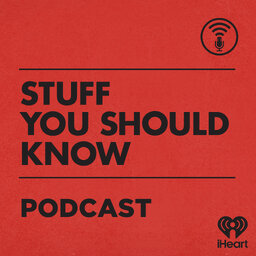What is parallel evolution?
In the process of parallel evolution, two seemingly unrelated species living in isolation can evolve surprisingly similar traits -- but how does it work, and why does it happen? Join Chuck and Josh as they break down the process of parallel evolution.
Learn more about your ad-choices at https://www.iheartpodcastnetwork.com
 Stuff You Should Know
Stuff You Should Know


